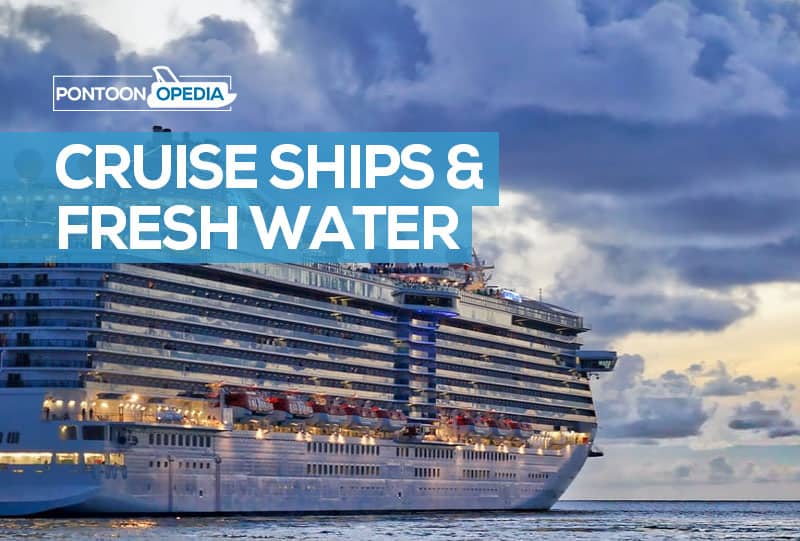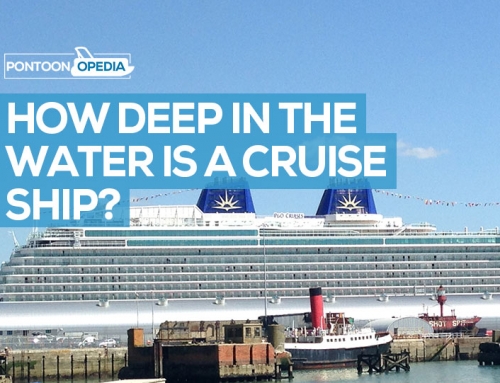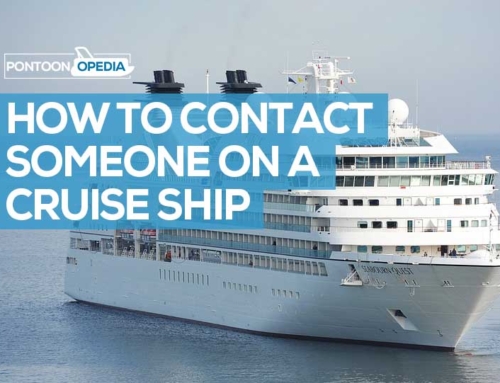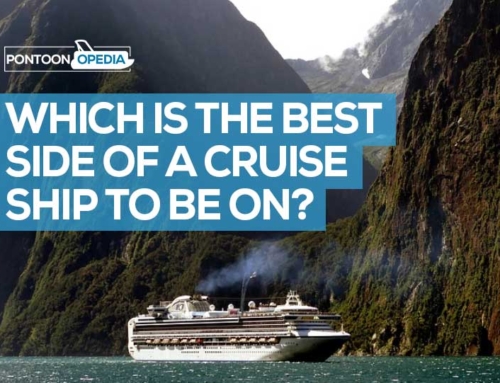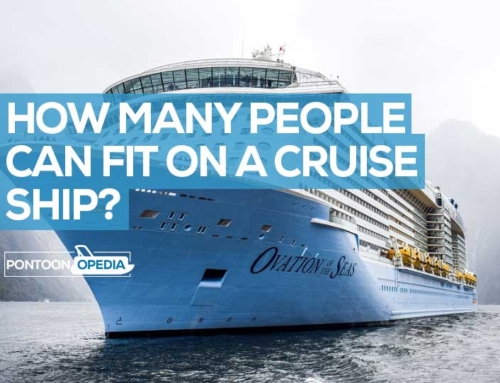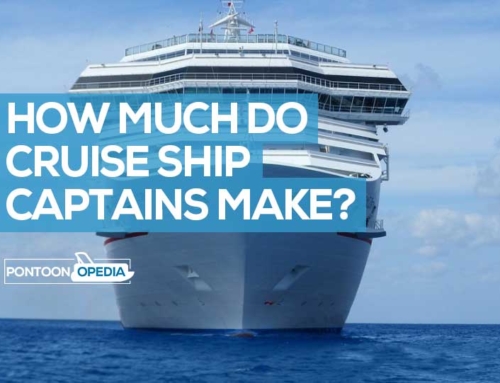If you have ever been on a cruise after a few days, you might wonder where they are getting their fresh water or even perhaps if they make it on board. You might be surprised to hear that actually; cruise ships can carry tons of fresh water out to sea for the duration of the journey.
But how exactly do cruise ships make or get their water? Here’s all you need to know with the basics answered first, then some details on whether it’s safe to drink and how the water system works.
Table of Contents
How do cruise ships get fresh water?
Some of the modern and larger cruise ships will make their own water onboard using a desalination plant. Other smaller or older cruise ships will get water before the trip which is stored in large tanks that cruisers don’t get to see.
Do cruise ships carry fresh water?
Yes cruise ships do carry water. There are tanks aboard every cruise ship that take potable water for every person on board. The largest cruise ships have their own water purification system, that allows them to make as much water as they need.
How much fresh water does a cruise ship carry?
Cruise ships will carry as much fresh water as they need for each passenger unless of course it’s larger modern vessel that can make its own drinking water. So they won’t carry as much, it’s more instead made when required. Some cruise ships can hold up to 2 million laters of water at any given point in time.
How does the water system work on a cruise ship?
In the belly of each great cruise ship is a desalination plant. This plant’s only job is to create fresh water that suitable for drinking and cleaning by removing salt and other ocean impurities, such as:
- Plastic
- Seaweed
- Flotsam
Since the first century people have attempted to remove the salt from sea water. In the 1940’s the endeavor took off and the first powered desalination plants were put into aircraft carriers.
Today the cruise lines make it a point to provide fresh water to their passengers. The creation of these plants gave the cruising industry the foothold it needed to become the worldwide phenomenon that we know now.
The process that these plants use is a form of reverse osmosis which takes particulate out of water. The steps that water goes through to remove the salt are:
1. Pumping
As the ship travels in the water, a pair of large funnels situated on each side of the hull push water into the pump area. The pump’s purpose is not to bring in the water, but to pressurize the water for the filtering step.
Since we are talking about enough fresh water for thousands of passengers and crew, the pump you need will have to be substantial.
It is the amount of water the pump can move that will determine how many gallons can be processed a day. This pressure must remain constant and provide enough force for the membrane to perform its job at its peak. They work together to clean the water.
2. Filtering
Calling what is in the filtration system of a cruise ship, a filter is akin to saying the Grand Canyon is a pothole. The filtration system work is a series of membranes that make several stages for the water to pass through.
Each membrane only allows water particles to make it through, so there are only a few gallons of water created for hundreds of gallons processed. The cruise ship version works at a furious pace to remove all impurities as fast as possible.
3. Flushing
Earlier, when the membrane failed to process all the impurities, this is what happens to them. They are flushed outside of the hull back into the ocean via another series of tubes. A large portion of the maintenance on a cruise ship is spent rinsing the pipes to keep them clear of debris.
If the tubes in the flushing system were to clog, you would see a flow back, meaning that water greywater and contaminated seawater would begin to flow inside the ship.
Maintaining a desalination machine can be difficult as salt is one of the most corrosive substances on the planet.
Not just sea water
The desalination plant is not just for how cruise ships get fresh water for cleaning and drinking. It is a fully contained unit that cleans all types of wastewater aboard the cruise ship. While there is some question as to the cruise ships’ impact it has on global warming, they make extra effort to maintain clean water for every passenger and crew member.
There are standards that the water level must remain while they are at sea. The United States Coast Guard recommends that there be 30 gallons of water per passenger per day of the voyage.
That should be no problem, as some of the high-end ships have enough capacity to produce 42,000 gallons of water per day.
The largest ships cruising the ocean have several restaurants and eateries aboard. This food must be prepared just like any other, and that means there’s going to be a large kitchen or kitchens.
Cooking requires a large amount of water, especially when a seafood course is on the menu. Fish and shellfish must undergo a furious scrubbing to be made clean for public consumption.
The same water that comes out of the plant makes the food. Meaning that this water must be held to a staggeringly high standard before it can be distributed to the passengers or the crew for cooking.
The most amazing part about the whole process is how clean the water becomes. It is some of the best tasting water on the planet.
Is the water on a cruise ship safe to drink?
Now you know how cruise ships make and get their fresh water for drinking and washing with, you might be wondering just how safe it is to drink.
You will pleased to hear that the water on a cruise ship is perfectly safe to drink once it comes out of the taps. It will have been filtered and tested before it even gets into the pipes heading towards your room and the restaurants. The drinking water on cruise ships goes through a rigorous testing system laid out by the various health agencies around the globe.
How to save water on a cruise ship
The creative ways that cruise companies have come up with to reuse water are nothing short of amazing. They have invested as much time in making fresh water on the cruise ships as they have in building a comforting environment for all its passengers.
The ways in which they conserve water are:
1. Steam evaporation
Another way that the companies purify water is to use the heat from the gigantic engines.
- They pass the water over the engines, and it causes it to boil.
- This steam is then collected on a piece of plastic above, which turns back to clean water when it reforms above the plastic barrier.
- It then runs off to a pipe that stores this clean water for bathing and cooking.
2. Bunkering
This could be the oldest version of water conservation there is. Bunkering is the term used for storing water on board before the trip begins. The bunkering method has been used since the dawn of sailing, and today’s cruise ships are still practicing it.
Bunkering by cruise ships is frowned upon in areas that are having water shortages.
Before the water can be stored, it is tested and treated to ensure that there are no impurities. Bunkered water on a cruise ship is used for:
- Water slides
- Pools
- Drinking water
- Bathing
3. Reverse osmosis
Reverse osmosis is the process that desalination plants do for cruise ships. This method takes seawater into a pair of funnels and cleans it by passing it through several membrane filters at high pressure.
The process itself only occurs inside the membrane, where tiny water particles are mashed into the minuscule indentions.
4. Aeration
Aeration is when the water that comes out of the sink faucets and showerheads are driven by condensed air. This air gives appropriate pressure to the appliances while using less water.
On average, a shower uses about 16 gallons. With aeration, the same shower can be taken with as few as 10 gallons.
5.Condensation
The bank of air conditioners on board a cruise ship produces enough water to power their clothes cleaning. They reuse the water by filtering it from the drip pans to the laundry. Inside the laundry, the water is boiled and cleaned before going back to work.
6.Passenger help
A prevalent trend with cruise ships these days is to have the passengers wait an extra day to wash their bedclothes. By saving the sheets for a few additional days, you also save ships water for everyone else. This delay in time saves the ship water.
Final thoughts…

